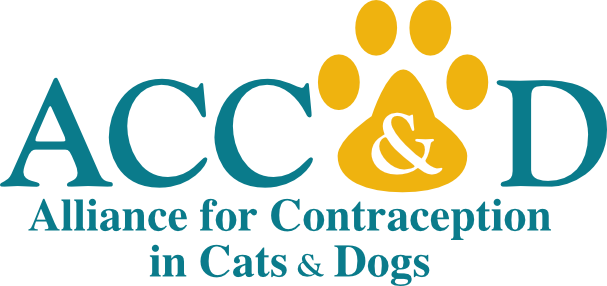
ACC&D Projects
Managing Free-Roaming Cat Populations to Meet Your Goals

Knowing the impacts of different management strategies can help people make more informed choices. It can also help create better, more cost-effective management policies.

Featured resources to help your TNR efforts
New January 2022
Practical take-aways from our latest paper “Guidance for management of free-roaming community cats: a bioeconomic analysis” without all the technical background.
New May 2022
After you’ve read Counting Cats and have started to collect data, use this tool to calculate your progress toward recommended sterilization targets.
Working to improve how free-roaming cats (FRCs) are managed
Trap-Neuter-Return (TNR) programs certainly benefit individual cats. However, many programs also strive to reduce numbers of cats at the community level, which is ACC&D’s goal, too. But this raises questions:
What’s the best way to reduce numbers of FRCs?
What must be done for humane approaches to be more effective than lethal removal?
What is the cost?
Knowing the impacts of different management strategies can help people make more informed choices. It can also help create better, more cost-effective management policies.
ACC&D did just this, convening a team of experts to build a bioeconomic model that looks at both costs and population impacts. It helps answer crucial questions for the animal welfare community, policymakers, conservationists, and anyone seeking to manage FRCs.
Our finding, in a nutshell: TNR can work extremely well! The best population reductions and economic efficiency require that sterilizations be “frontloaded” and performed intensively early in the intervention. The most effective model sterilized 75% of cats in a first big push, and then sterilized 75% of any remaining or new intact cats during the next 6-month period. Though this requires a lot of resources upfront, it can quickly move into a less-intensive maintenance phase, and your hard work will pay off long-term. The model showed that intensive sterilization additionally leads to the lowest number of “preventable” deaths of kittens and cats of any management strategy that we evaluated.
Meanwhile, for removal to be effective, it must be done at an intensity that is not commonly practiced given the number of cats needing to be killed on a continual basis, and the inevitable community pushback. Real-world removal tends to be more sporadic, which is both inhumane and minimally effective.
The take-away: research supports TNR, but we must do it strategically to get the results that advocates want to see.
And no matter the intervention, abandonment of new cats can quickly undermine progress, speaking to the importance of holistic community policies and support for vulnerable populations of owners and pets.
Keep reading to see our publications and guidance translating the science into practical steps to improve TNR impact.
More Resources
-
If you want the practical take-aways from our modeling without all the technical background, check out From computer models to communities: Strategies to better manage free-roaming cat populations. It covers key findings from our research, and the recommendations and guidelines that result.
Our StoryMap covers how different FRC management methods reduce numbers of preventable deaths of cats and kittens. Our model showed that over 10 years, FRC populations managed by high-intensity TNR experienced over 30 times fewer preventable cat deaths than taking no action, while reducing populations in the process.
Since knowing how many cats are in your target population is critical to designing an intervention and knowing if it’s working, we also share strategies to monitor FRC populations in a Counting Cats and created a calculator to help set your goals.
-
Our newest (2021) peer-reviewed publication, “Guidance for management of free-roaming community cats: a bioeconomic analysis,” models the cost and population impacts of different FRC management strategies. For a summary of the paper’s findings click here (recorded presentation running from 16:28 – 36:10).
Our 2019 publication, “A Long-Term Lens: Cumulative Impacts of Free-Roaming Cat Management Strategy and Intensity on Preventable Cat Mortalities,” looks at the cumulative impact of different management actions on free-roaming kitten and cat mortality over a 10-year period.
And our initial (2014) publication, “Simulating Free-Roaming Cat Population Management Options in Open Demographic Environments,” gives an in-depth look at the population size impacts of TNR, removal, culling, and combination management methods.
-
One question that motivated this project was whether a temporary contraceptive for cats (specifically GonaCon) could offer advantages over traditional surgical spay/neuter for FRC population management. Results from ACC&D simulations and a subsequent field study suggested that GonaCon is not likely to be a useful FRC management tool with its current efficacy profile. To better quantify necessary improvements, the ACC&D-convened team performed additional simulations, and results are presented in this publication.
-
At the start of the COVID-19 pandemic, ACC&D’s computer modeling team simulated the impact that a “gap” in sterilization surgeries would have on different TNR scenarios. Results showed that lost ground need not be as hard to regain as it might seem. Our modeling also revealed how programs can be most successful when resuming TNR. The findings are relevant not only for the global pandemic, but to recovering from any “gaps” in TNR once a program is underway.
To learn more, watch the video, Keep Calm and Carry On: The impact of COVID-19 on TNR and how to get back on track. After you’ve watched the video, dig a little deeper by viewing a panel discussion that includes members of ACC&D’s modeling committee, ACC&D’s Joyce Briggs and wildlife population biologist Dr. John Boone. Watch a recording of the panel discussion here.
ACC&D’s Free-Roaming Cat Model Development Team
Aaron Anderson, PhD - National Wildlife Research Center, USDA APHIS
Valerie Benka, MS, MPP - Alliance for Contraception in Cats & Dogs
John Boone, PhD - Great Basin Bird Observatory
Joyce Briggs, MS - Alliance for Contraception in Cats & Dogs
Julie Levy, DVM, PhD, DACVIM - University of Florida College of Veterinary Medicine
Philip Miller, PhD - IUCN SSC Conservation Planning Specialist Group
Felicia Nutter, DVM, PhD, DACZM - Cummings School of Veterinary Medicine at Tufts University
Margaret Slater, DVM, PhD - ASPCA
Chris Slootmaker, PhD - National Wildlife Research Center, USDA APHIS
Steve Zawistowski, PhD, CAAB - ASPCA (retired), Hunter College Program in Animal Behavior and Conservation



